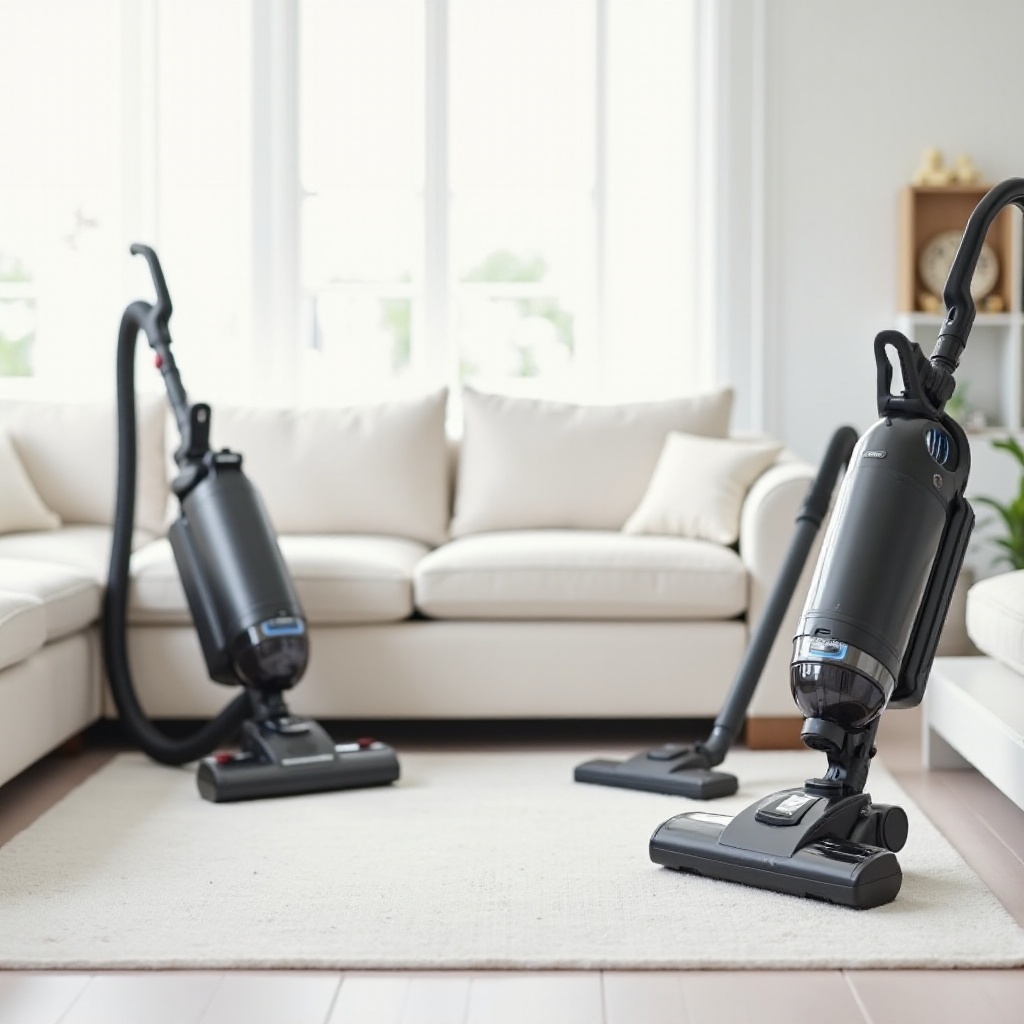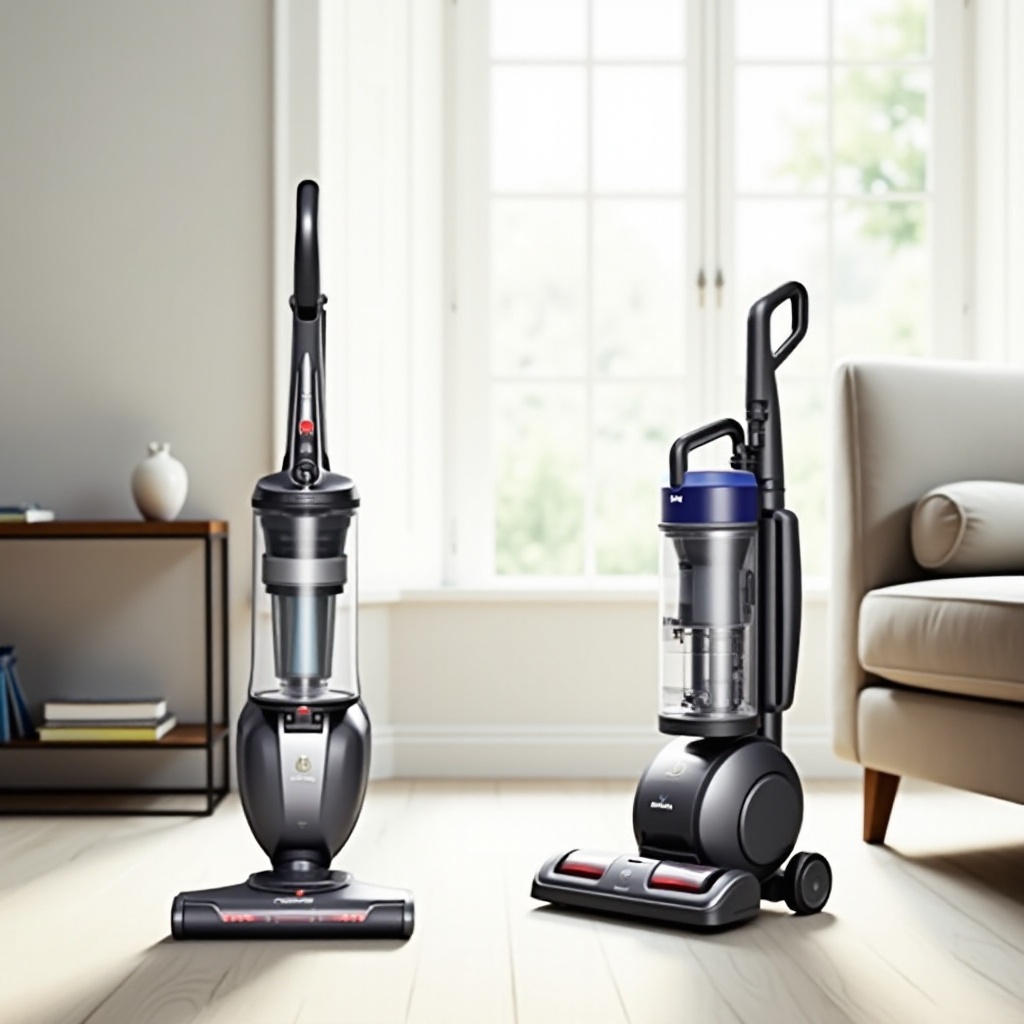Introduction
Choosing between a bagless and a bagged vacuum can be challenging. Understanding the differences is crucial to making the best choice. This detailed guide will explore the essential aspects of both vacuum types, including their advantages, disadvantages, and suitability for different needs. By the end, you’ll know which type of vacuum suits your home and lifestyle best.

Understanding Bagged Vacuums
What They Are
Bagged vacuums have been around for decades. They use a replaceable bag to collect dirt and debris. Once the bag is full, it is removed and discarded, simplifying the cleaning process. This type of vacuum is known for its reliable performance and widespread use.
Key Components
The primary components include the vacuum body, the bag, and the motor. The bag acts as both a filter and a container. The motor generates suction power, pulling dirt into the bag and ensuring efficient cleaning. Additional components like cords, hoses, and filters contribute to its overall functionality.
Bagged vacuums perform well and maintain their efficiency, offering advantages and some drawbacks that are important to consider before making a decision.
Advantages of Bagged Vacuums
High Filtration Efficiency
Bagged vacuums are lauded for their excellent filtration systems. The bag itself often serves as a highly effective filter, capturing fine particles that may elude other types of vacuums. This high filtration efficiency is beneficial for maintaining indoor air quality.
Cleaner Disposal Mechanism
Disposing of dirt and debris is typically cleaner with a bagged vacuum. Once the bag is full, it can be sealed and discarded without releasing dust into the air. This cleaner disposal process is particularly advantageous for those with allergies or respiratory issues.
Disadvantages of Bagged Vacuums
Ongoing Cost of Bags
One of the most significant downsides is the recurring cost of replacement bags. These costs can add up over time, making bagged vacuums a potentially more expensive option in the long run.
Reduced Performance When the Bag Fills
As the vacuum bag fills up, the vacuum’s performance may diminish. Reduced airflow and suction power can result in less effective cleaning, requiring more frequent bag changes to maintain optimal performance.

Understanding Bagless Vacuums
What They Are
Bagless vacuums are a more modern innovation. Instead of a bag, they use a bin or canister to collect dirt and debris. These vacuums often incorporate advanced filtration systems and can be emptied directly into the trash, making them a convenient and eco-friendly option.
Key Components
Key components of a bagless vacuum include the vacuum body, a transparent collection bin, and filters. The bin provides a clear view of dirt levels, allowing users to see when it needs emptying. The filters ensure that dust and allergens are trapped inside the vacuum, preventing them from being released back into the air.
Bagless vacuums stand out in their own right due to distinct advantages as well as some considerations regarding maintenance and use.
Advantages of Bagless Vacuums
Cost-Effective Over Time
Bagless vacuums are generally more cost-effective because they do not require replacement bags. This absence of recurring costs makes them an economical choice for long-term use. You only need to invest in occasional filter replacements.
Transparent Collection Bins
The transparent collection bins of bagless vacuums offer a clear advantage. They allow users to see the amount of dirt gathered, so there’s no guessing when it needs to be emptied. This visibility also enables users to retrieve any accidentally vacuumed items quickly.
Disadvantages of Bagless Vacuums
Dust Exposure During Emptying
One notable drawback is the exposure to dust during the emptying process. When dumping the dirt from the collection bin, dust and allergens can become airborne, potentially causing issues for sensitive individuals.
Potential Maintenance Issues
Bagless vacuums might require more frequent maintenance. Regular cleaning of the filters and collection bin is necessary to maintain good performance and avoid clogging. This ongoing maintenance can be seen as a hassle to some users.
Considering the balance of advantages and disadvantages across both options will help guide your choice.
Practical Considerations
Ease of Use
Ease of use is a key factor when choosing between bagged and bagless vacuums. Bagged vacuums are straightforward to use, with a simple bag replacement process. Bagless vacuums are equally easy to use but may involve a more hands-on approach during the emptying and maintenance processes.
Cost Factor
Cost is another significant consideration. While bagged vacuums might have lower upfront costs, the price of replacement bags can make them more expensive over time. Bagless vacuums have higher initial costs but are more economical in the long run due to the absence of bag purchases.
Suitability for Different Surfaces and Space Sizes
Both types are suitable for a variety of surfaces and space sizes. However, bagless vacuums, with their transparent bins and advanced filters, might be better suited for larger spaces and frequent cleaning. Bagged vacuums, with their superior filtration, might be more suitable for smaller areas where air quality is a top priority.
Evaluating your specific needs and environments will steer you toward the ideal choice for your home.

Recommendations Based on User Scenarios
Best for Families
Bagless vacuums are ideal for families since they often require less frequent maintenance and cost less over time, leaving more room in the budget for family activities.
Best for Pet Owners
For pet owners, bagless vacuums with powerful suction and HEPA filters are recommended. They handle pet hair and dander efficiently, keeping your home clean and allergen-free.
Best for Allergy Sufferers
Allergy sufferers should opt for bagged vacuums. Their high-filtration efficiency and cleaner disposal mechanism ensure that allergens are not released back into the air, providing a healthier environment.
Conclusion
Both bagged and bagless vacuums have distinct advantages and disadvantages. The choice between the two depends on your specific needs and preferences. Considering factors like cost, ease of use, and suitability for your home helps in making an informed decision. Take these insights into account to select the vacuum that best fits your lifestyle.
Frequently Asked Questions
Are bagged vacuums better for allergies?
Yes, bagged vacuums typically offer better filtration and cleaner disposal, reducing allergen exposure.
How often should I replace vacuum bags?
Replace vacuum bags every 1-2 months or when they are about two-thirds full to ensure optimal performance.
Do bagless vacuums require more maintenance?
Bagless vacuums need regular cleaning of the collection bin and filters to maintain performance, but they avoid the ongoing cost of buying bags.
